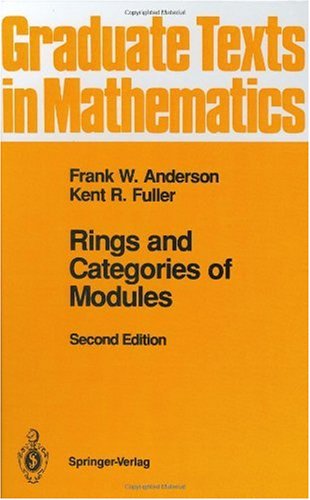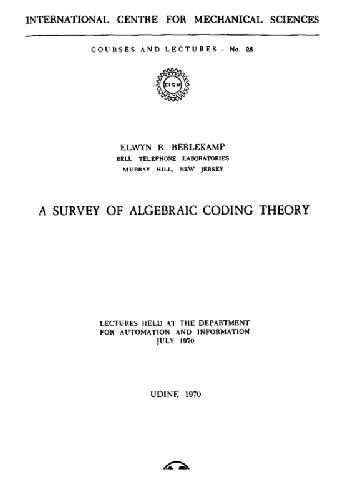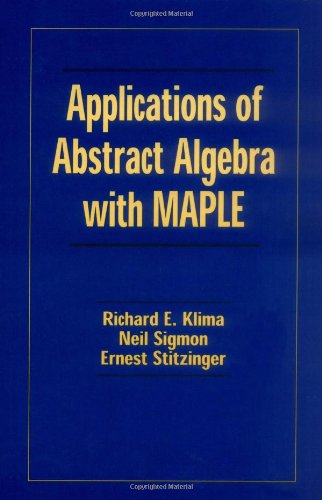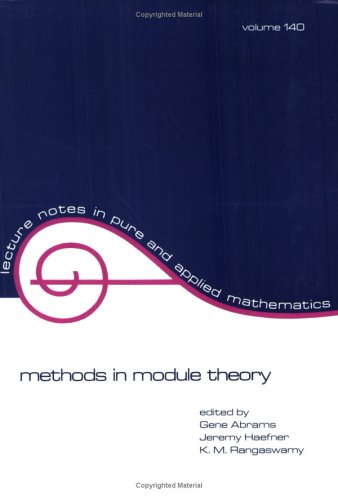Bugeaud Y.0511265913
Table of contents :
Half-title……Page 3
Title……Page 5
Copyright……Page 6
Contents……Page 7
Preface……Page 11
Frequently used notation……Page 16
1.1 Dirichlet and Liouville……Page 19
1.2 Continued fractions……Page 23
1.3 The theorem of Khintchine……Page 30
1.4 The Duffin–Schaeffer Conjecture……Page 36
1.5 Complementary results on continued fractions……Page 37
1.6 Exercises……Page 39
1.7 Notes……Page 41
2.1 Rational approximation……Page 45
2.2 Effective rational approximation……Page 47
2.3 Approximation by algebraic numbers……Page 49
2.4 Effective approximation by algebraic numbers……Page 51
2.5 Remarks on irrationality and transcendence statements……Page 57
2.6 Notes……Page 58
3 The classifications of Mahler and Koksma……Page 59
3.1 Mahler’s classification……Page 60
3.2 Some properties of Mahler’s classification……Page 63
3.3 Koksma’s classification……Page 65
3.4 Comparison between both classifications……Page 70
3.5 Some examples……Page 79
3.6 Exponents of Diophantine approximation……Page 80
3.7 Exercises……Page 86
3.8 Notes……Page 88
4 Mahler’s Conjecture on S-numbers……Page 92
4.1 Statements of the theorems……Page 93
4.2 An auxiliary result……Page 96
Difficulties encountered and general strategy……Page 98
Two reductions of the problem……Page 99
Some auxiliary quantities……Page 100
The sets…, essential and inessential intervals……Page 102
The sets………Page 104
4.4 Exercise……Page 105
4.5 Notes……Page 106
5.1 Hausdorff measure and Hausdorff dimension……Page 108
5.2 Upper bound for the Hausdorff dimension……Page 111
5.3 The mass distribution principle……Page 113
5.4 Regular systems……Page 116
5.5 The theorem of Jarník–Besicovitch……Page 121
5.6 Hausdorff dimension of sets of S*-numbers……Page 123
5.7 Hausdorff dimension of sets of S-numbers……Page 128
5.8 Restricted Diophantine approximation……Page 131
5.9 Exercises……Page 132
5.10 Notes……Page 135
6 Deeper results on the measureof exceptional sets……Page 140
6.1 Optimal regular systems……Page 141
6.2 AKhintchine-type result……Page 143
6.3 Hausdorff dimension of exceptional sets……Page 147
6.5 Sets with large intersection properties……Page 148
6.6 Application to the approximation by algebraic numbers……Page 149
6.7 Exercises……Page 154
6.8 Notes……Page 155
7 On T -numbers and U-numbers……Page 157
7.1 T -numbers do exist……Page 158
7.2 The inductive construction……Page 159
7.3 Completion of the proof of Theorem 7.1……Page 167
7.4 On the gap between omega and omega……Page 169
7.5 Hausdorff dimension and Hausdorff measure……Page 170
7.6 On U-numbers……Page 171
7.7 A method of Güting……Page 177
7.8 Brief summary of the results towards the Main Problem……Page 179
7.9 Exercises……Page 180
7.10 Notes……Page 181
8.1 Sprindžuk’s classification……Page 184
8.2 Another classification proposed by Mahler……Page 189
8.3 Transcendence measures and measures of algebraic approximation……Page 198
8.4 Exercises……Page 202
8.5 Notes……Page 206
9.1 Approximation in the field of complex numbers……Page 209
9.2 Approximation in the field of Gaussian integers……Page 211
9.3 Approximation in the p-adic fields……Page 212
9.4 Approximation in fields of formal power series……Page 217
9.5 Notes……Page 219
10.1 The Littlewood Conjecture……Page 222
10.2 Open questions……Page 224
10.3 Notes……Page 235
A.1 Definitions and useful lemmas……Page 237
A.2 Liouville’s inequality……Page 240
A.3 Zeros of polynomials……Page 245
A.5 Notes……Page 251
Appendix B Geometry of numbers……Page 253
References……Page 258
Index……Page 291







Reviews
There are no reviews yet.